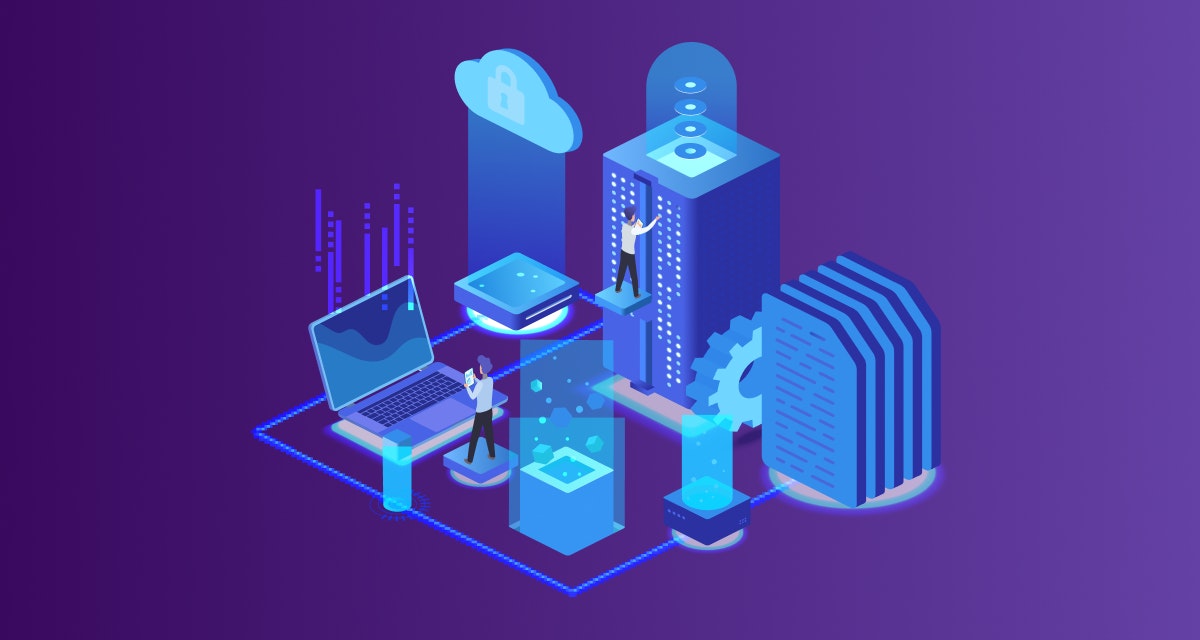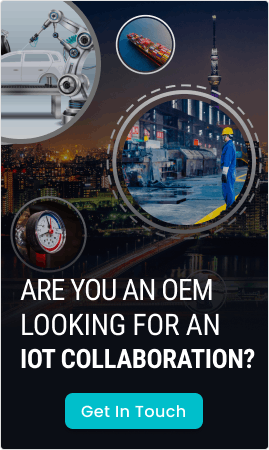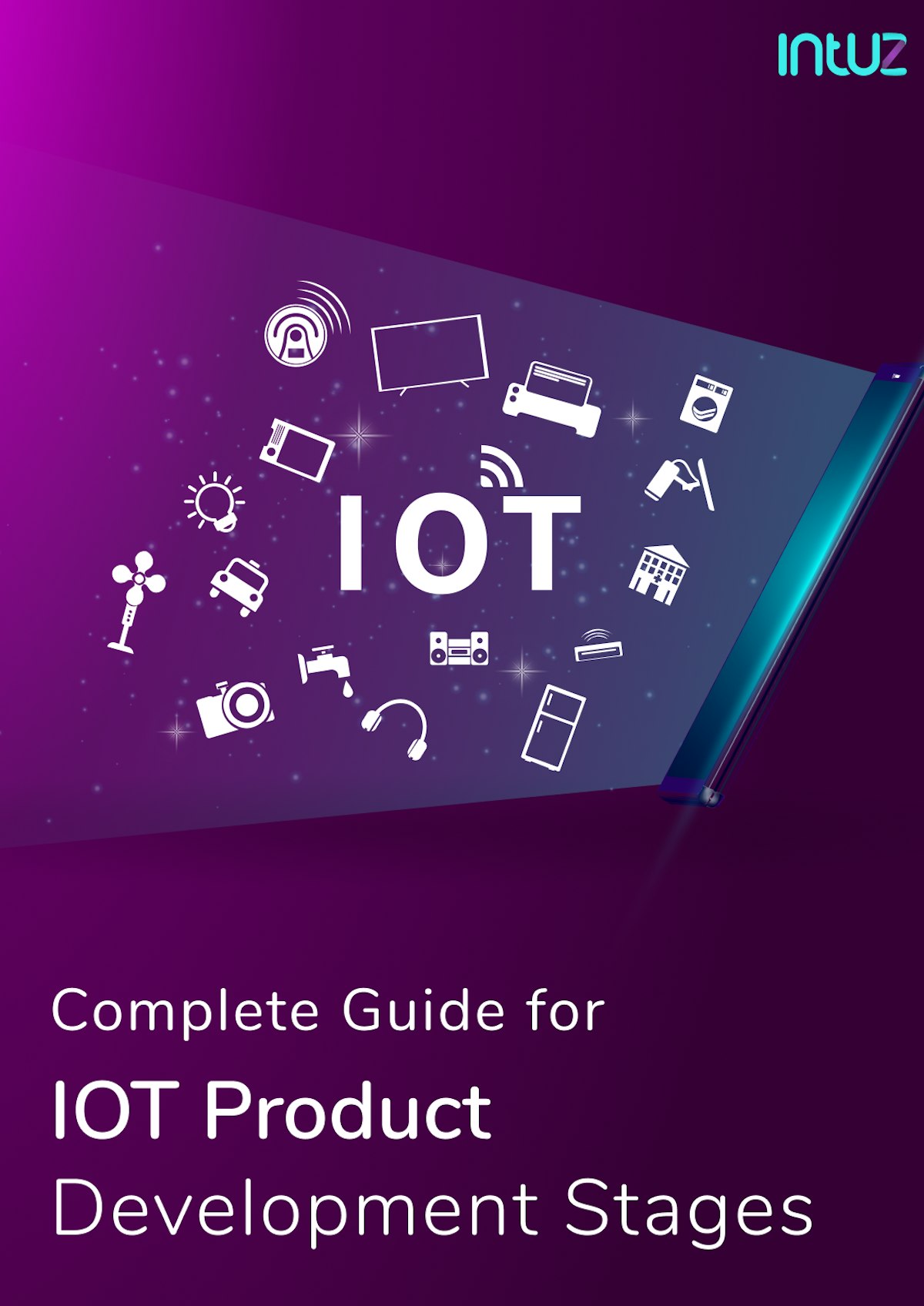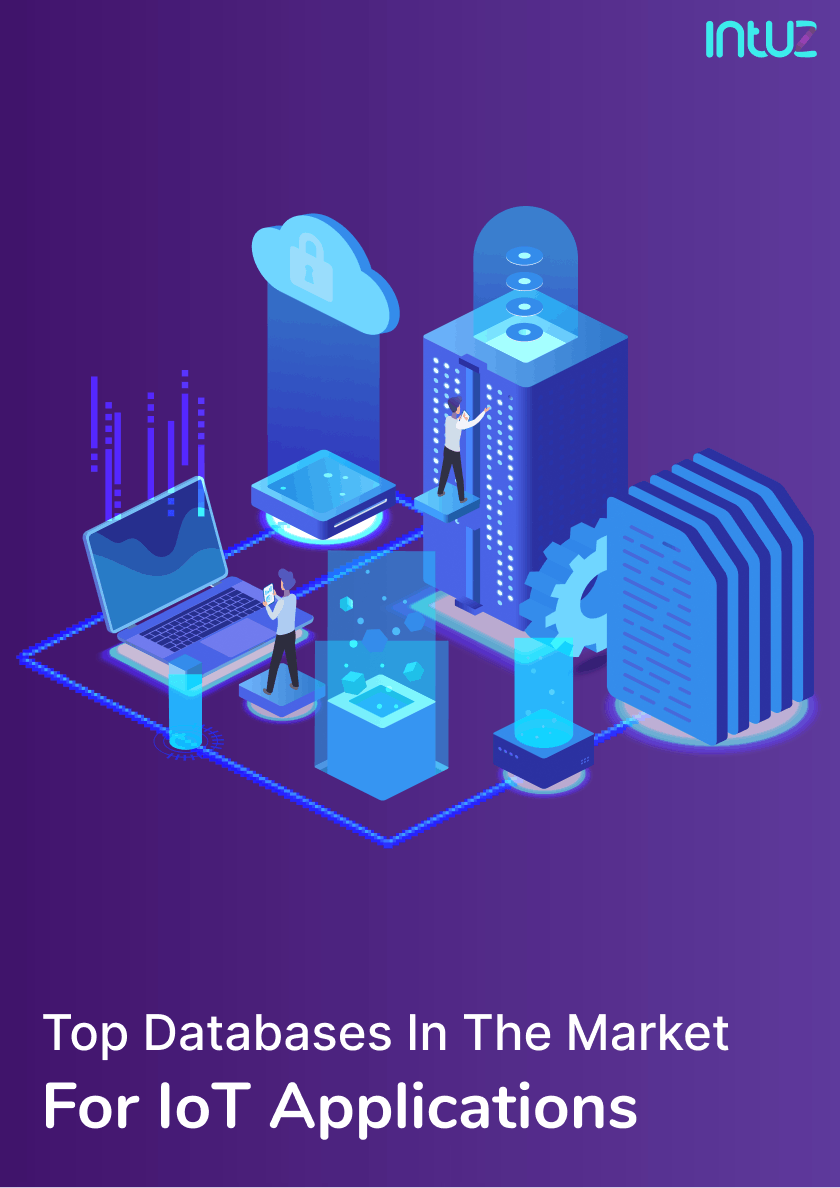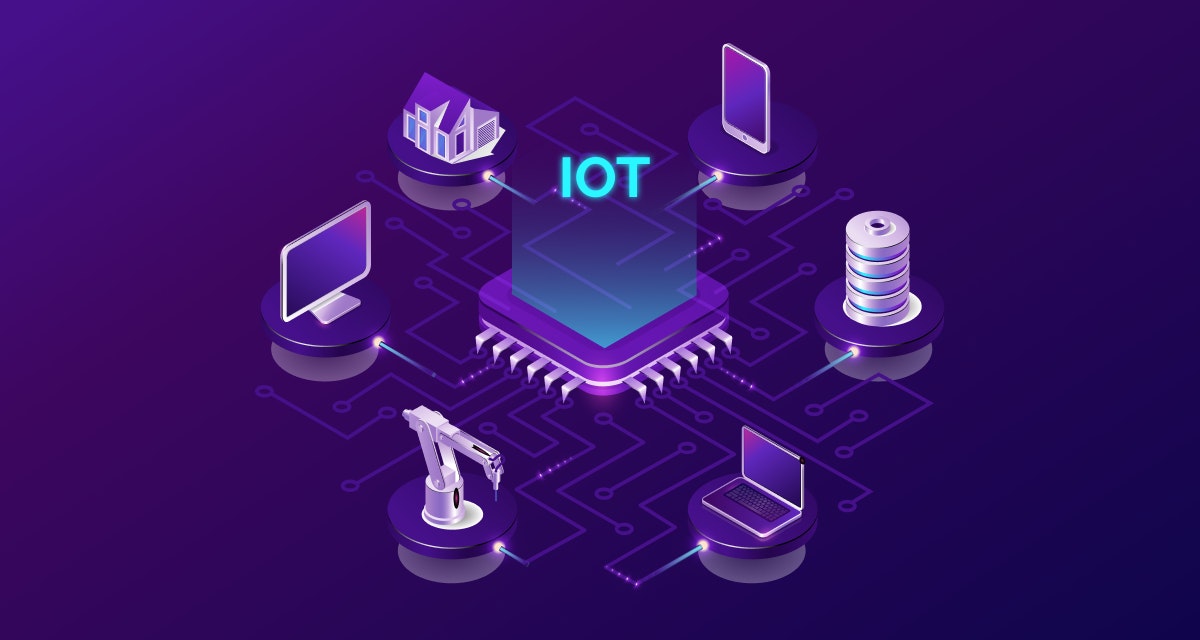Table of content
Redis, InfluxDB, CrateDB, Riak TS, MongoDB, RethinkDB, Microsoft cosmosDB, and Apache Cassandra are some of the most popular databases for IoT apps in this day and age. They are agile and come with their security functionalities, helping businesses store, process, and analyze data efficiently. But how do they fare against each other? And what are the different types of IoT databases in the market? How costly is it to deploy one? Read everything you need to know about IoT databases in this guide:
The Internet of Things (or IoT) means different things to different people. To consumers, IoT allows them to lead a “smarter” existence with the advent of wearables, trackers, mobile applications, and sensors, and automate their homes and vehicles.
To vendors, the Internet of Things is a massive trend that is important to their enterprise customers and the latest marketing bandwagon they also want to hop on.
To businesses, IoT technology provides them with immense potential to create products that will upgrade user experience and boost operational efficiencies. The truth of the matter is, that the Internet of Things is here to stay, making headway for commercial success.
But here is the thing: IoT poses many challenges such as expensive IoT app development life cycle and market talent gap. However one could argue that nothing is more complicated than managing large volumes of data and protecting them against potential threats.
You see, IoT sensors and devices generate huge amounts of data that must be stored, analyzed, and processed. Over time, the data volumes can get overwhelming. That is where the use of a database is needed for efficient IoT app data management.
Transform Your Operations with Smart IoT Solutions!
Explore ServicesWhy is a database needed for IoT?
Database systems form an essential component of an IoT network. They store the data transmitted from different IoT devices and systems and help integrate it in real-time across a wide range of IoT databases.
Databases play a critical role in supporting efficient handling and storage of data. As such, building the right database is just as difficult as developing an effective platform.
IoT infrastructures require intelligent management systems capable enough not only to manage large amounts of information but also to make sense of them by appropriately assigning meaningful context tags.
They process a vast amount of data generated every second at each point where they come into contact with physical things within their operational field. That means, as an IoT app scales in terms of users and functionalities, it needs a Big Data architecture to support the influx of data.
With proper infrastructure, the data generated by smart devices and sensors can be sent through a network back to the central application. MQTT, HTTP, or CoAP are the methods to move data over the network.
Each of these has its benefits depending on the use case but both are typically similar in function. The data may be sent in real-time or in batches. However, if data points are created randomly and not ordered by their value then they will lose more information.
Also, measuring real-time data performance with app-level data without latency is also possible. The order that data points are created can be really important to analyze for certain problems like predicting the weather which requires huge amounts of detailed calculations.
Once you have gathered your time-series data, analyzing it provides opportunities to carry out more valuable automated tasks based on specific set scenarios.
By linking IoT data with private or public benefits that have complex condition sets such as traffic analysis, utility networks, and power use across real estate locations, you can create even greater value for clients.
Different IoT databases you should know about
You can save money and reduce your operational overhead by grouping similar databases. Identifying the characteristics of each dataset is the first step in availing a database service. Depending upon the data-access methods, you may require the following database:
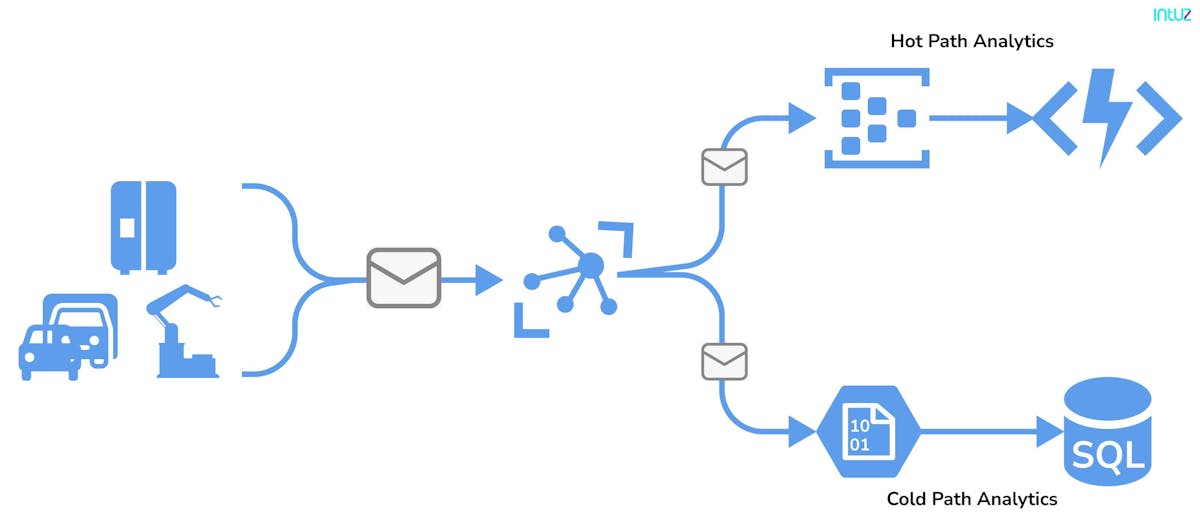
i. Hot databases
These are typically used for data that is frequently being queried or updated. They are often a good choice for storing data as they provide read and write capabilities with little latency at the lowest cost.
When choosing a hot database you can consider the following features — flexibility in data formats, querying abilities, messaging/ queueing capability, and tiered memory models.
ii. Cold databases
They store information in their original state with little to no changes made thereafter. In contrast with real-time data collection, storing huge volumes of historical data can be a difficult task on cold databases.
At this point, some of the popular choices for storage solutions include hardware on commodity servers or cloud provider services such as Amazon S3 and Azure Blob Storage Service. A cold database is often involved to store specific metadata related to who needs access to which records and when they should have it.
The design of your managed IoT database can be hot or cold. The categorization allows you to narrow down your choices between different types of databases depending on what kind of application it will serve best.
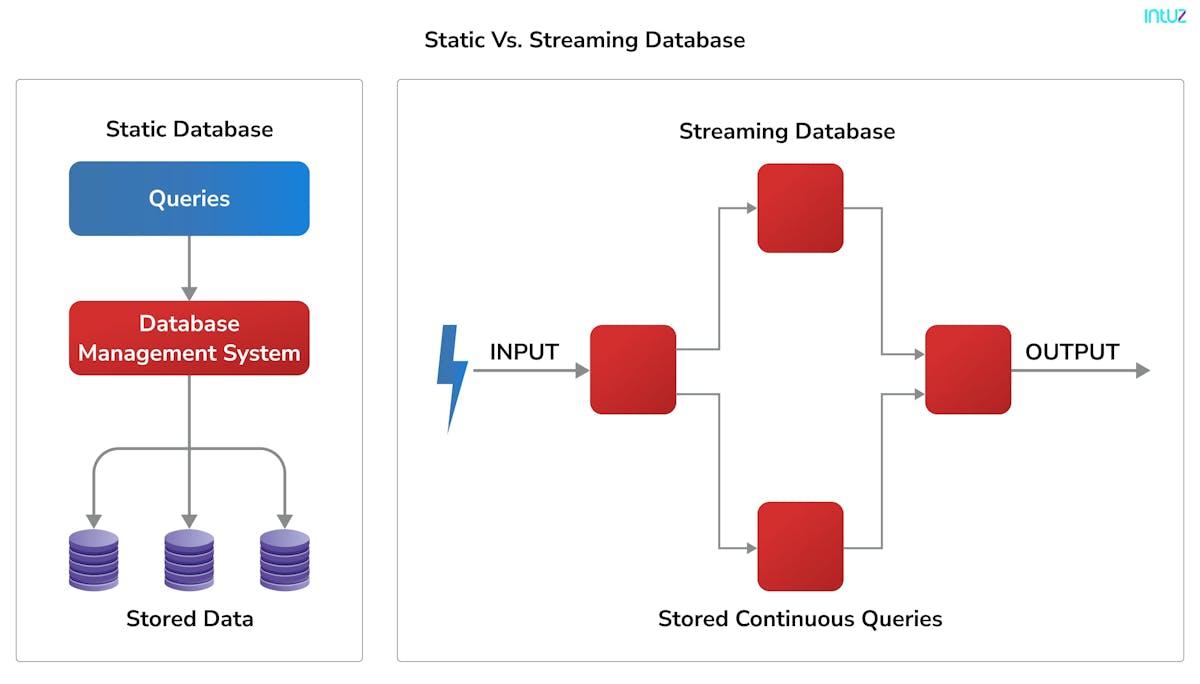
A typical data structure in IoT
- IoT sensors collect data which includes automation data, status data, actionable data, and other attribute-related data such as location, temperature, illumination, humidity, and so on. The IoT devices can be classified as passive (low power sensors), active (live streaming data sensors), and dynamic (bidirectional applications).
- Data subsets are created for data storage in repositories. The collected data is categorized before storage in the cloud.
- The billions of IoT data feeds can be used to create a searchable, centralized repository irrespective of their hosting.
- General reports can be continuously generated using the data from the repositories.
- As mentioned earlier, advanced analytics will be able to make predictions on how certain devices behave in specific environments.
The use of predictive analytics provides a way to learn more about the obscure processes taking place within different types of fields, including programming languages code, and traffic patterns.
It provides accurate insights into your workflows based on previous data points collected through IoT devices.
Top 10 databases for IoT applications for data storing
1. Redis
Redis, short for Remote Dictionary Server, is an open-source, in-memory data structure store widely used as an IoT database. It is known for its blazing-fast performance, making it an ideal choice for real-time applications that require low-latency data processing. Redis supports various data structures such as strings, hashes, lists, sets, sorted sets, bitmaps, and more, allowing for flexible data modeling and efficient querying.
One of Redis's key strengths in the IoT domain is its ability to handle high-velocity data streams. IoT devices generate massive amounts of data, and Redis can ingest and process this data in real time, enabling near-instantaneous analysis and decision-making. Its pub/sub (publish-subscribe) mechanism and built-in messaging capabilities make it well-suited for event-driven architectures common in IoT systems.
Redis also excels in caching and session management, helping to offload databases and improve application performance. In IoT scenarios, caching can be crucial for reducing latency and ensuring responsiveness, especially in scenarios where devices have intermittent connectivity or operate in remote locations.
While Redis is primarily an in-memory database, it offers persistence options like RDB (Redis Database) and AOF (Append-Only File) to ensure data durability. This allows IoT systems to recover from failures or restarts without losing critical data.
2. InfluxDB
Often hailed as the next generation of time-series databases, InfluxDB is an open-source distributed time-series database developed by InfluxData. The company specializes in data analytics tools built for human interaction with large amounts of measurement data.
In addition to being written entirely in the Go programming language, the IoT database is based on LevelDB — a key-value type system where one can store and query values stored as keys and associated timestamps (Value).
A part of their main advantages over other databases such as Oracle or SQL Server products from Microsoft, are its capacity to aggregate different measurements into buckets without any manual intervention aside from configuring what you want to be aggregated within your design plan beforehand.
This makes the database advantageous specifically because these types of storage systems require users to manually configure each bucket separately.
InfluxDB is a powerful database designed to store time-series data. It stores information in a structured way that allows for fast and efficient querying of the stored data through SQL-like queries.
The database has no external dependencies which makes it easy to install, deploy, use, and maintain with minimal overhead on resources while also being very secure thanks to the default TLS encryption.
The software is easily accessible via Grafana, the front-end tool providing visualization features such as charts or graphs for all kinds of values.
InfluxDB provides the ability to store data via HTTP, TCP, and UDP. The forwarding of these protocols is designed for efficient transport with minimal loss or duplication in timestamps.
3. TimescaleDB
TimescaleDB is an open-source time-series database optimized for handling large volumes of time-stamped data, making it an excellent choice for IoT applications. Built as an extension on top of PostgreSQL, TimescaleDB inherits the robustness, SQL compliance, and extensive feature set of PostgreSQL while introducing specialized capabilities for time-series workloads.
One of TimescaleDB's key strengths is its automatic partitioning and data management capabilities. It transparently partitions data based on time intervals, allowing for efficient storage, querying, and maintenance of massive time-series datasets. This is particularly beneficial for IoT systems that generate continuous streams of sensor data over extended periods.
TimescaleDB also offers advanced analytics capabilities, including built-in support for time-series aggregations, data retention policies, and continuous aggregations. These features enable real-time monitoring, alerting, and historical analysis of IoT data, providing valuable insights into device performance, usage patterns, and anomaly detection.
Additionally, TimescaleDB supports full SQL, enabling developers to leverage existing SQL skills and tools for querying and analyzing IoT data. Its compatibility with PostgreSQL also allows seamless integration with a wide range of existing applications and data pipelines.
4. CreateDB
This is a relatively new IoT database system in the market, which was developed by Crate.io Inc. It fully integrates both a searchable document-oriented data store and an SQL engine for managing machine and IoT data.
CrateDB was developed as a scalable solution for companies to manage their machine databases without worrying about performance. Today 75% percent of customers use it because it is easy to use. Users have complete control over their work when using CrateDB.
It provides an SQL-like interface to help data scientists and developers build applications without the need to learn NoSQL. CrateDB combines the power of an ad hoc query engine with that of integrated search, allowing users to view tables in their entirety.
You can also explore specific subsets according to various criteria such as date range or faceted dimensions like location types. With its container architecture and automatic data sharding, even your big dataset becomes easily scalable by adding more nodes on demand through cloud providers at any time.
CrateDB is a powerful NoSQL database that blends the best of both worlds. It has a SQL-like language for querying and prediction analysis, but it also uses a document-oriented approach instead of rows and columns, like other IoT databases.
The Crate Shell CLI allows users to put up interactive queries that can be run locally or remotely on multiple servers at once without needing any special knowledge of how each server works as they all work similarly with this interface.
5. Apache Cassandra
A relatively new kid on the block, Apache Cassandra is a high-performance and distributed open-source database. It is designed for managing voluminous amounts of structured data across many commodity servers.
As compared to other databases, Apache Cassandra offers additional capabilities such as availability, linear scale performance with simplicity, and ease in the distribution of IoT data across multiple database servers.
The database was developed by Facebook to help with their Inbox search as well as being made open source in 2008.
Apache Cassandra implements the Dynamo-style replication model, which means that there is no single point of failure and it adds a more powerful column family data model.
NoSQL databases (also known as Not Only SQL) allow rapid and ad-hoc organization of extremely high volume, disparate data types. They have become more important in recent years as Big Data has increased the need for rapidly scaling database technologies.
Apache Cassandra is one example among many NoSQL databases that have addressed some limitations of previous management systems. NoSQL databases are designed to be more simplistic, and scalable and allow for finer-grained control over availability.
They can provide faster performance than relational ones. For example, a document database is great for storing complex hierarchical or nested objects.
An in-memory key/value store may be the best option if you need to process millions of rows per second with low latency and high throughput.
NoSQL holds many advantages over traditional RDBMS systems such as MySQL because they use different kinds of IoT data structures which are often better suited to certain types of problems — for instance, querying large datasets.
6. Microsoft Cosmos DB
Microsoft Cosmos DB is a globally distributed, multi-model database service offered by Microsoft Azure. It supports multiple data models, including key-value, document, graph, and column family, making it a versatile choice for IoT applications with diverse data requirements.
One of Cosmos DB's standout features is its global distribution capabilities. It allows data to be replicated across multiple Azure regions, ensuring low-latency access for IoT devices located in different geographical locations. This is particularly beneficial for IoT systems with a globally distributed footprint, enabling real-time data ingestion and processing from devices worldwide.
Cosmos DB provides automatic indexing and querying capabilities, simplifying the process of extracting insights from IoT data. Its multi-model support allows developers to represent and query data using the most appropriate data model, whether it's key-value pairs, JSON documents, graphs, or wide-column formats.
Furthermore, Cosmos DB offers tunable consistency models, ranging from strong consistency to eventual consistency, enabling developers to balance data consistency requirements with performance and availability needs. This flexibility is crucial for IoT systems that may have varying consistency requirements based on the criticality of the data or the specific use case.
7. Riak TS
It is a distributed NoSQL key/value store optimized database that helps to store large amounts of IoT data. In Riak TS, TS stands for “time series.”
The kind of service it provides is very important for the Internet of Things because it stores many types of information about objects and people's interactions with them.
Riak TS can be used to collect information such as temperature or location at any given time. The database has been designed to be efficient enough for multiple users to use it simultaneously without losing performance.
Furthermore, this open-source system offers both “read or write” access by design and better scalability than most databases.
Riak TS is one of the leading database technologies on the market for handling critical data needs. It supports Apache Spark integration, which makes it possible to support Spark streaming, IoT data frames, and Spark SQL.
It can be deployed in any application needing a quick response time with high throughputs from its databases.
Riak TS is a scalable database that can be installed on the data center or public cloud. Amazon Machine Images for Riak TS are available, making it easy to access the system in Amazon's AWS workspace. The time-series database solution is extensible and scalable.
Riak TS includes a complete build of Riak KV but adds the ability to co-locate keys of the same series within the same quanta for fast READs. As an available and partition-tolerant option, it uses SQL queries to make querying easier.
8. RethinkDB
This is a database designed to store JSON documents and can be scaled up by adding machines. RethinkDB has allowed developers, who use the platform for IoT-based projects, to work with real-time data that updates automatically when queried through Rethink's new access model.
With its flexible query language, RethinkDB allows you to easily monitor your APIs while also being easy enough for beginners to learn. It is a new database that has been hailed as the "next generation of open-source by many experts in the field."
RethinkDB offers many advantages over its predecessor, MongoDB. For starters, it includes an advanced query language that supports table joins and subqueries, making it perfect for complex IoT data queries.
The system’s elegant and powerful API integrates seamlessly with Rethink's query language. A simple administration UI allows easy sharding (splitting) or replication in just one click. Ample online documentation is available to help users through their tasks without any guesswork.
The query-response database access model of RethinkDB is a tried and tested way of interacting with IoT data on the web. The feature maps perfectly to HTTP's request response, making it perfect for serving up content that does not update in real-time.
However, modern applications require sending data in near-constant streams as user input or other events trigger new results being calculated by the application server.
RethinkDB has developed its architecture around these types of needs so it can give developers an environment that responds quickly even if there are millions of simultaneous connections happening at the same time.
9. MySQL
MySQL is a popular open-source relational database management system (RDBMS) that has found widespread adoption in various domains, including IoT. While traditionally used for structured data storage and querying, MySQL has evolved to support IoT workloads through its robust features and extensions.
One of the key advantages of using MySQL for IoT applications is its proven reliability and scalability. MySQL can handle massive amounts of data generated by IoT devices, making it suitable for large-scale deployments. Its replication capabilities allow for easy data distribution and high availability, ensuring continuous operation even in the face of failures or maintenance activities.
MySQL's support for SQL and structured data modeling makes it a familiar choice for developers experienced with relational databases. This can simplify the integration of IoT data with existing data pipelines and analytics tools that rely on SQL-based querying and analysis.
While MySQL may not be optimized for time-series data out of the box, it can be extended through third-party plugins or custom solutions to improve its performance for IoT workloads. For example, the TokuDB storage engine provides better compression and indexing capabilities, making it more efficient for handling large volumes of sensor data.
Additionally, MySQL offers advanced features like partitioning, sharding, and clustering, which can be leveraged to distribute and manage IoT data at scale. Its robust security features, including encryption, user authentication, and access control, ensure the protection of sensitive IoT data.
10. SQLite
It is an open-source relational database that minimizes the overhead for applications and provides easy access to data. SQLite is highly portable and compact yet efficient enough to be reliable. The database is small enough to store on a single cross-platform file.
SQLite offers several advantages over other databases because not only does it offer ACID compliance but also uses dynamically weakly typed syntax which is easily readable by developers. That is a win in many respects.
The infrastructure of the database itself can link with dynamic as well as static apps so you do not have any limitations there. SQLite comes with an incredible library that provides a self-contained, serverless, zero-configuration, and set-up database engine.
Its code is in the public domain and free for use by anyone for all purposes, including commercial or private purposes. SQLite has been deployed more than we can count on our fingers with frequent usage by high-profile projects.
It is one of the most lightweight libraries in existence. SQLite can be less than 600KiB, depending on the target platform and compiler optimization settings.
It has been used to create applications such as Google Maps for mobile devices which requires being able to run efficiently with limited resources.
There is a tradeoff between memory usage and speed as SQLite usually runs faster. It consumes more RAM but there are some low-memory environments where performance is not an issue at all for this library because its design was specifically tailored to them.
Depending on how you use it, SQLite may even outperform direct filesystem I/O. The database has been used by many companies large and small since before 2000 when they first released their alpha version 1.
Key factors to consider while selecting a database for IoT applications
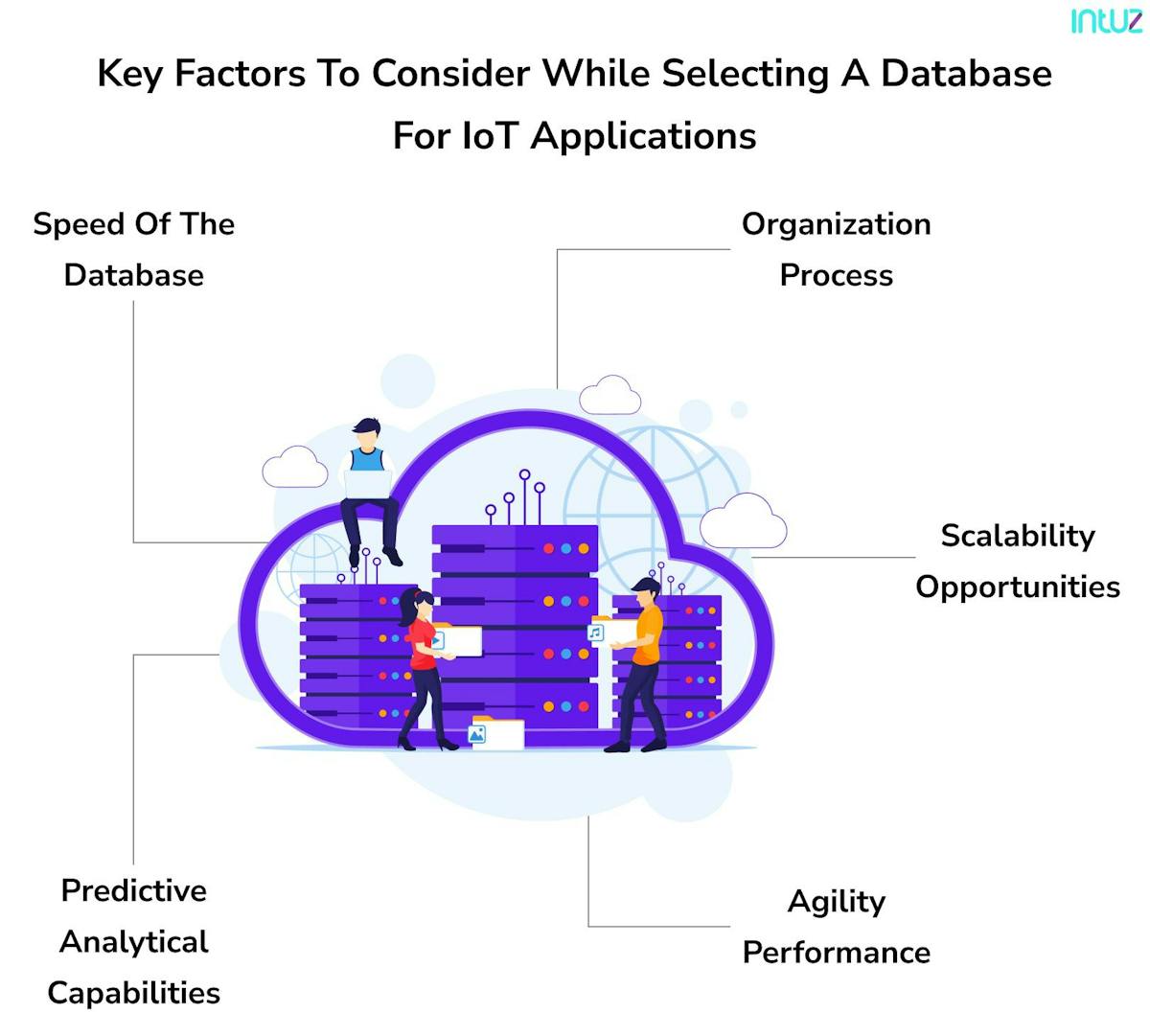
1. Organization prowess
The Internet of Things is all about data. Sensors and actuators are installed throughout the enterprise to not only collect information from IoT devices but also create a network of connected things for real-time analytics.
You need a database for studying patterns in historical data and triggering notifications or actions. It helps you make informed decisions in real time by reviewing data collected by sensors and actuators connected across your enterprise while an edge server collates all of it.
You have the option to store the data on cloud servers or on-premise. Cloud databases come with a plethora of features and benefits, such as scalability, security from hacking attacks, and increased accessibility for employees working remotely.
2. Scalability opportunities
When analyzing database needs, consider your current requirements and your future business plans as well. The edge servers are key to IoT deployments and their performance needs to be considered in your strategy.
They can process IoT data on the fly, enabling quicker decision-making. For instance, the adaptation of traffic lights according to congestion levels or increased heating in a room when temperatures drop too low.
Deploying IoT devices across multiple geographic regions ensures availability during outages while reducing latency. You must also be mindful of how much network bandwidth the IoT devices will require so you can provision for the infrastructure capacity needed.
3. Agility performance
Breaking down the design of an IoT solution shows the services are interdependent. They interact in the context of your overall architecture needs. Keeping things simple is important so you must focus on individual tasks or modules.
Design each module independently to ensure that each service's interface remains stable over time while accounting for potential updates. This will prevent the risk of breaking other modules reliant upon its functionality.
A robust database allows you to react quickly when needed. It often involves making decisions about what happens next based on rules you have set up ahead of time using machine learning techniques.
Services such as transport layer protocols like TCP/IP handle ensure these packets get delivered reliably even during adverse conditions. Data Ingest ensures logs and messages sent by devices are not missed during an outage.
The C&C Dashboard provides a visual representation of the current state, giving you insight into your data and trends in real-time through an interactive dashboard.
4. Predictive analytical capabilities
The architecture of a network will typically consist of three main components: edge analytics, service routing, and data ingestion. These pieces are responsible for processing the incoming information and performing different tasks to make it more useful in real-time scenarios.
Edge Analytics is used for translating, classifying, aggregating, or filtering out important details from raw messages coming into your system at high speeds.
The dashboard has customizable widgets for key performance indicators like battery life or proximity alerts from connected devices. Database needs include maintaining accurate and updated information.
Business Intelligence provides reports, queries, and inferences on historical data stored by database management systems. It quickly studies patterns based on this rich dataset and answers complex questions.
You can leverage predictive analytics to increase productivity outcomes, streamline inventory management, and optimize manufacturing processes.
5. Speed of the database
Data is constantly being consumed and produced. You need a high-speed database to store the data. It must be robust to handle an influx of new information in case there are sudden spikes in volume or velocity.
How much does a database cost?
Once the application has been defined, you must evaluate the cost of the database as well. The process would ideally include the following components:
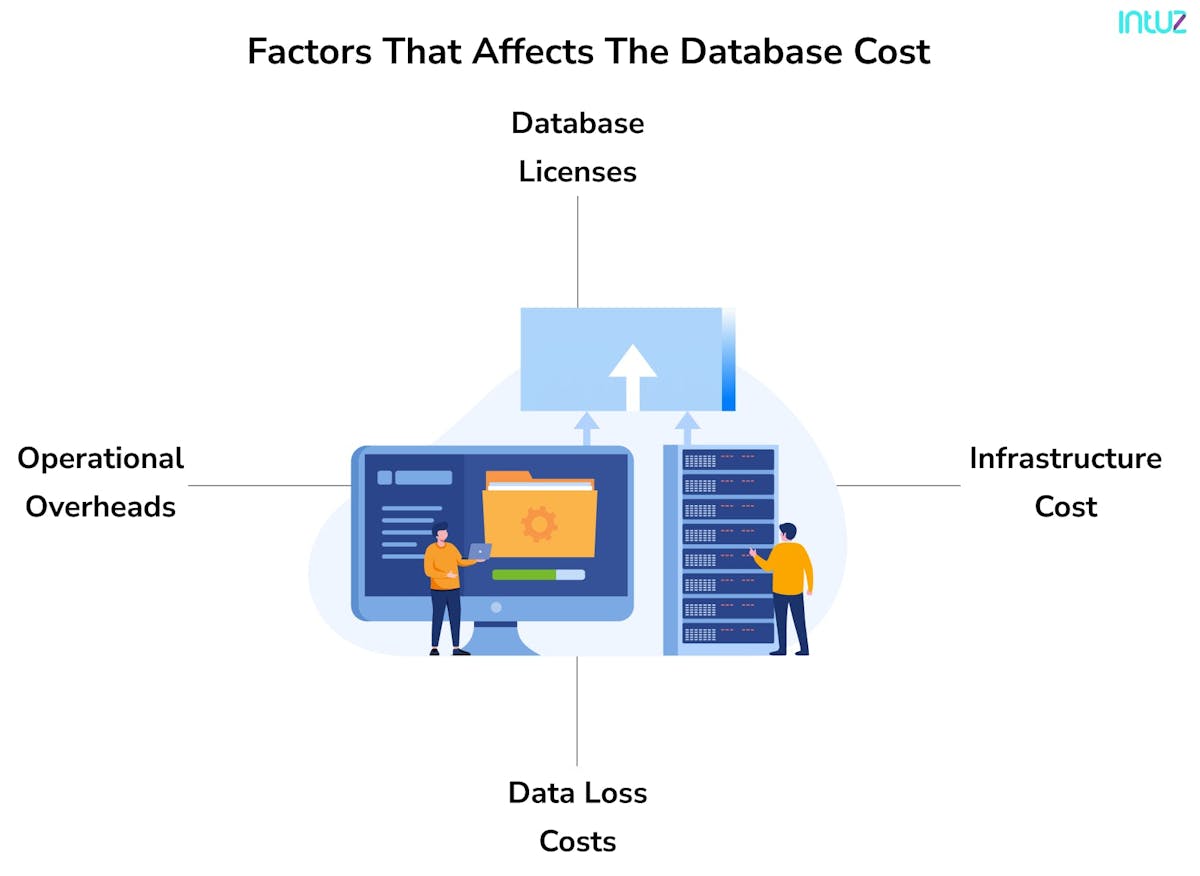
i. Database licenses
These can be expensive and vary depending on the complexity of your needs. They include the costing of the number of CPUs, number of shards in a cluster, database size, throughput, time horizon (annual, monthly, or quarterly), features for high availability or recovery capabilities to ensure that you are protected from downtime.
You may even find some open-source databases that do not cost anything. The license cost varies depending upon your requirements.
ii. Infrastructure cost
This completely varies based on your database. If you use a lightweight database, you might only need two servers to perform at the same level as more traditional ones, which usually require many more resources.
You also have to consider other factors such as hardware usage and architectural constraints, before making any decisions.
iii. Data loss costs
Not a problem — they can be covered by proper database insurance. Having this type of protection is critical if you have any commercial IoT solutions in place because it can be costly and time-consuming when an accident or downtime happens. An SLA with your vendor that covers such events lessens your burden.
iv. Operational overheads
They can be managed through automation. A database that offers automation for all functions including deployment, provisioning, failover, control, and scaling will help you operate your database more efficiently in the long run.
How to choose the best enterprise for IoT databases
Given IoT solutions can be distributed across geographies, it is imperative to adopt a database platform that offers you the flexibility to process the data at the edge and sync the edge servers and the cloud.
Unfortunately, IoT presents a new set of obstacles for database management systems. This includes processing events as they stream in, ingesting data in real-time, and securing larger numbers of IoT devices than previously dealt with in enterprise apps.
But there is a silver lining: IoT imposes fewer data quality and integrity issues. For instance, an IoT app that gathers data from a fleet of vehicles can handle data loss for a few minutes and yet not let anything hinder the operational capabilities of the vehicles.
Even though IoT sensors generate data rapidly, they do not demand the same type of transactions as compared to traditional enterprise business apps. This minimizes the need for isolation, consistency, and atomicity in transactions.
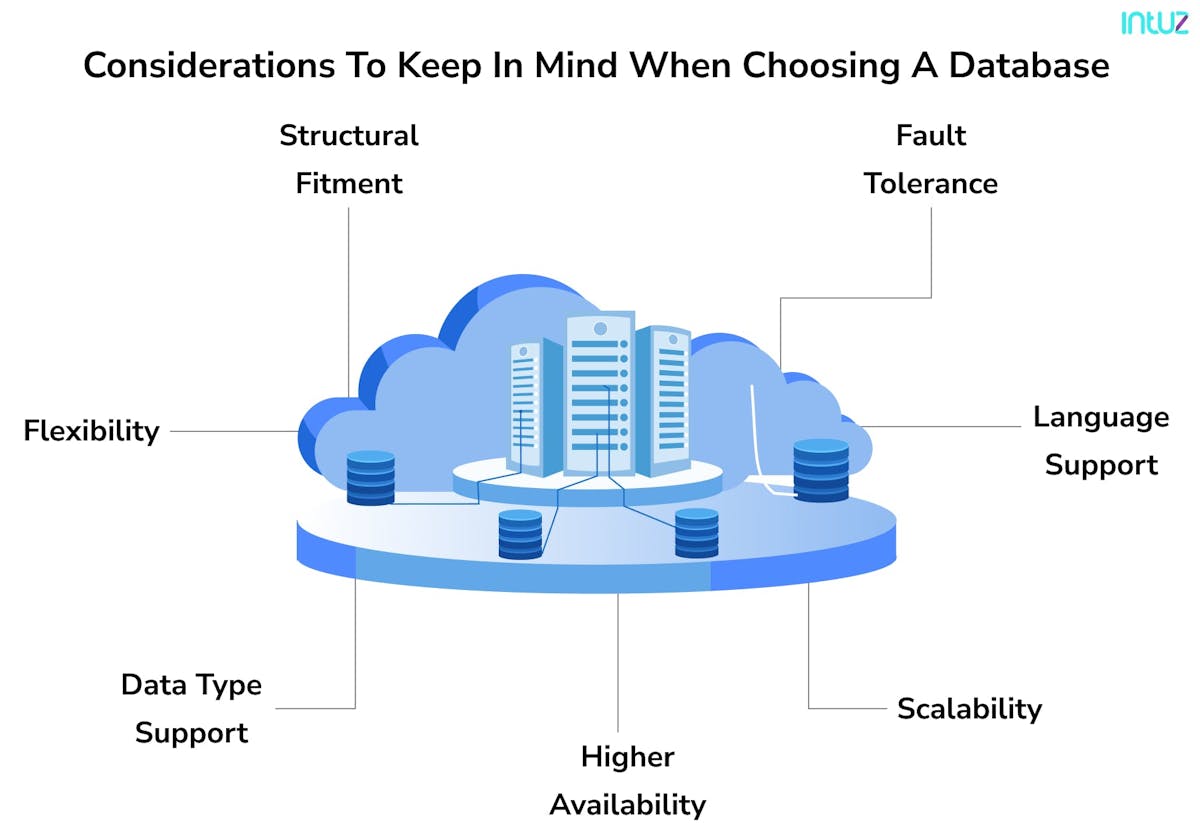
So, to find a suitable database that can handle all the IoT data transmitted, businesses must put aside preconceived notions about building database apps for traditional business operations. This section will discuss four considerations to keep in mind when choosing a database:
1. Fault tolerance
An IoT database should be fault-tolerant. Meaning, that if a nodule in the database cluster falters, it should still be able to accept ‘read and write’ requests. Distributed databases duplicate the data and ‘write’ the copies for multiple servers.
So, if one of the servers storing a specific data set fails, then the other server having the replica of the data set can respond to the ‘read’ query. Write requests can be managed in many ways.
If the server that usually accepts the request is down, then another nodule in the server can accept the request and pass it onto the target server when it is back online.
2. Language support
You must take note of the language used to implement the database. Is your IoT app development team comfortable with it? How popular is the language? The best practice is to stick to one language so that it is easier to include developers who are proficient in it.
Even if there is a problem with the IoT database, finding help for one language will not be as tedious as fixing a database that uses multiple languages. Convenience is necessary.
3. Scalability
This is a given: a database for IoT apps has to be scalable. Typically, IoT databases are linearly scalable. That means, adding another server to a 10-node server increases throughput by 10%. That is a huge win for IoT apps that have a huge potential to grow.
On the other hand, the databases must be distributed properly unless the app collects a small volume of data with little room for expansion. It is best to deploy distributed databases that can run on commodity hardware. These can be expanded by adding new servers to the mix.
Distributed databases are best suited for IaaS cloud systems as they make it easy to add or remove servers from the database clusters as needed.
4. Higher availability
When it comes to using a distributed messaging system such as Amazon Kinesis or Apache Kafka, you can be assured of accepting ‘write’ requests at higher volumes and storing them persistently in a publish-and-subscribe system.
Even if the volume of requests is too high for the distributed database or the server is down, the data can be stored in the messaging system until the database processes the backlog or additional nodules are added to the database cluster.
5. Data type support
You also need to consider what type of data the database supports. In an ideal scenario, full databases work best as they enable complex computing on small devices. This only includes traditional databases, i.e., those who are relational, graph-based and object-oriented.
6. Flexibility
The IoT database should be as flexible as required by the IoT application; otherwise, the network would not work as smoothly as you want to. In such a scenario, NoSQL databases, especially key value, column and document databases can accommodate various data types.
They do not require structures without the need for predefined or fixed schemas. NoSQL databases also work wonders when an organization has multiple data types that are predicted to change (expand/shrink) over time.
On the other hand, apps that collect a fixed volume of data — for instance — the data on weather conditions may work more efficiently on a relational database model such as in-memory SQL databases in the long run.
7. Structural fitment
From a database management viewpoint, the IoT app platform must be able to manage two different types of data in the backend: hierarchy and asset instances.
Every asset transforms an individual entry in the central asset database, including information about its position in the hierarchy and properties. The information about the hierarchy is essential for efficient communication.
The arrival of IoT places new demands on all aspects of the tech stack — especially in the underlying databases for data storage, management, and analysis.
In-house or managed IoT database: The ideal choice
Businesses that want better control over the equipment, security, software, and data should keep their database in-house. That means they can change their equipment based on the current requirements without having to rely on a service provider.
But this also comes with added responsibilities. They have to maintain IoT databases onsite, and for that, they need to deploy advanced security protocols and hire professionals who can monitor the database on a day-to-day basis.
On the other hand, a managed database can be a boon for businesses with a set budget. It is a cloud computing service where the end-user (i.e., you) pays a cloud service provider for access to a database.
Unlike a typical database, you do not have to set it up or maintain it on an ongoing basis. It costs less than purchasing the equipment. Plus, the vendor will offer you security and round-the-clock support, which means you can breathe easily.
The vendor will oversee the database infrastructure and take full responsibility for managing it for you. Your team might need some basic training to supervise the database on their own but that is convenient compared to managing an entire in-house team for database management.
Explore Top 30 IoT Development Platforms With Comparison In 2024
Read NowTake time to choose an efficient vendor
Irrespective of the type of database you decide to go ahead with, make sure you find a strong vendor. Have a series of discussions with them and even have custom demos to ensure you make the right choice.
You can always speak to the IoT experts at Intuz who will help you identify the best database for your app. Trust us — having a robust database for your IoT app can make all the difference in the world to your business.
